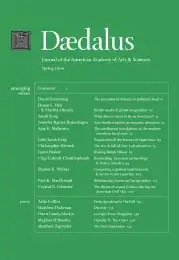Rebalancing American foreign policy
The United States faces unprecedented foreign policy and national security challenges.1 Conflicts in Iraq and Afghanistan, the global war on terrorism, the proliferation of nuclear weapons, the increasing assertiveness of Russia, the growth of Chinese military power, global climate change, not to mention the spread of poverty, infectious diseases, and ethnic and religious strife around the world: the challenges aren’t limited; the resources to meet them are. The high operational tempo of the wars in Iraq and Afghanistan has stretched the military to the breaking point. The ongoing financial crisis and economic recession will severely limit the ability of the federal government to sustain or increase expenditures for defense and foreign aid.
The Obama administration has a unique opportunity to reorient American foreign policy and lay out a new national security strategy that more effectively strikes a balance between the ends we seek and the means we possess. Such a strategy would recognize that the United States faces considerable constraints in the realm of foreign policy. Some of these are self-inflicted: the war in Iraq, for example, proved to be a costly undertaking that has severely burdened the U.S. military. Other constraints stem from developments outside of Washington’s control. The rise of new regional powers and the erosion of the liberal consensus will increasingly limit the exercise of American power. Given these developments, Washington must not only scale back American ambitions, but also demonstrate prudence with the nation’s limited resources.
In his classic book on the subject, Liddell Hart defined strategy as “the art of distributing and applying military means to fulfill the ends of policy.”2 While armchair generals often focus on the application of force, identifying and prioritizing the “ends of policy” are of equal, if not greater, importance. For without a clear sense of the ends, foreign policy will not only be incoherent, but often ineffective. Moreover, without realistic prioritization, foreign policy will attempt everything while, often, accomplishing nothing.
Elected on a foreign policy platform that preached modesty, the Bush administration came to define the goals of the United States in broad and lofty terms. In its 2006 National Security Strategy, for example, the White House boldly argued that the “ultimate goal” of U.S. policy would be to “end tyranny in our world” by creating “a world of democratic, well-governed states that can meet the needs of their citizens and conduct themselves responsibly in the international system.”3 Among the specific tasks listed as essential to realizing this vision were strengthening alliances to defeat global terrorism, working with others to defuse regional conflicts, preventing the spread of weapons of mass destruction, encouraging the development of democratic societies, and promoting free trade and open markets.
. . .
